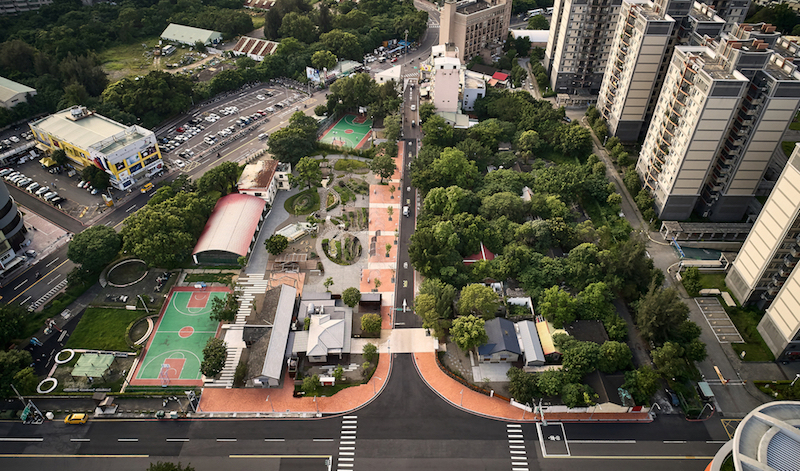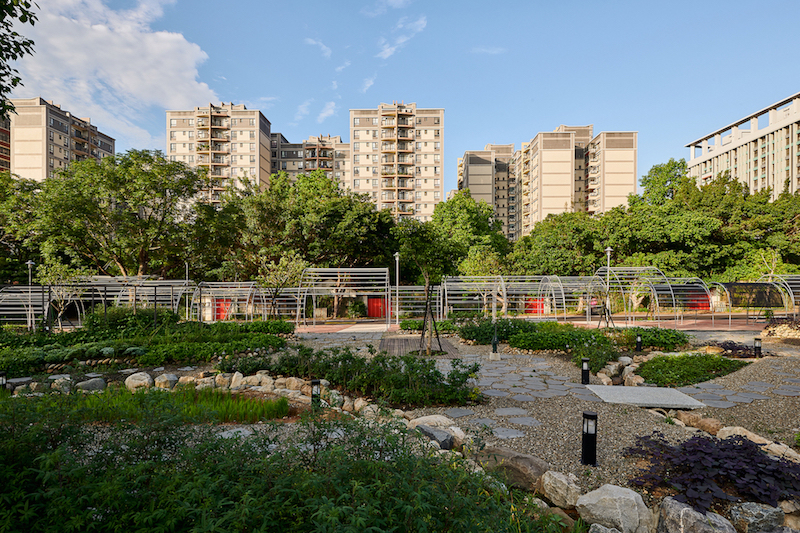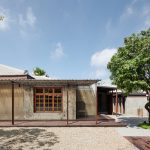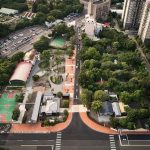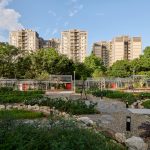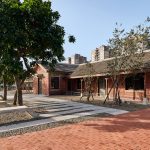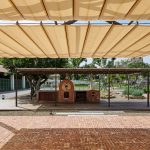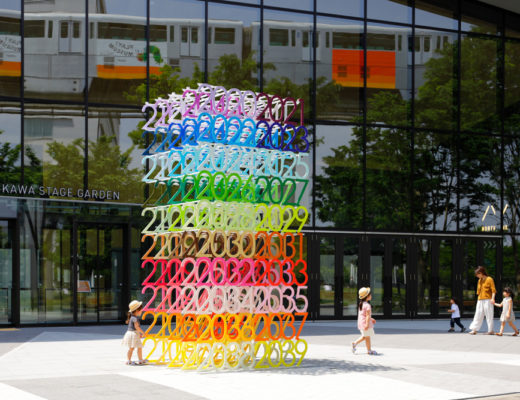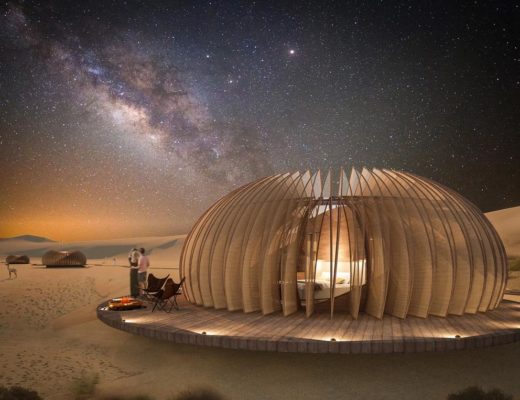Built in 1958, the 465m² General’s Village is a community residential development in Hsinchu City, Taiwan that has been recently restored.
Originally constructed after the Second World War to accommodate military families arriving with the KMT from mainland China, it was designated a landmark district of Hsinchu City in 2015. It comprises 15 original buildings that are still remaining.
Architecture practice PUMT Architects, led by Pu Ming Tseng was commissioned for the planning and restoration that took place between 2016 and 2019. The original village reflected the lives of military families as a unique sub-culture of Taiwanese history. The restoration plan envisions an open book information park, reflecting the diversity of ethnic groups, information, and cultures. The flow of information and knowledge is divided into four groups: Tradition, Local culture, Nature, and Future. This information will be shared with four local universities.
In response to the open book information park, the architect proposed concepts of mobility, transparency, openness, learning classification, and multi-discipline. Faced with the historical context of the site, the firm also proposed concepts of continuity with historic memories, restoration of spatial experience, retention of scalar elements, do away with enclosures, and spatial integration. “Our design restores space, life, memory, ecology, surfaces, and retains existing spatial traces,” says Pu. “We insert new infrastructures and reconnect the new and old with restraint.”
The continuation of time was an important aspect. So the architect proposed new infrastructures into existing historical buildings, clearly presenting the fragments of historic layers, while still preserving daily routine.
Part of the restoration uses new construction methods to dialogue with existing material and methods clearing identifying the different eras.
You might also like:
A countryside house in Taiwan that blends with its mountainous surroundings
Phoebe Says Wow architects designs Boolean birdhouse pavilion in remote Taiwanese mountains
The whole district is divided by vehicular roadways, so the architect increased pedestrian pathways, narrowed roadways, repaved roads, recommended reduction in the speed limit, and increased areas of public activities in an effort to integrate the park.
Existing walled houses give a collective sense of closure. The firm created more transparencies in walls, more spatial nodes, and paths while maintaining the existing sense of spatial scale.
With the goal of creating an edible forest landscape, the design concept recommended the demolition of large areas of asphalt paving, and replace it with the construction of open spaces in harmony with nature and ecology with permeable paving, new rainwater circulation system, urban farming, and community management.
The New General’s Village will accommodate the original families, the new households, young adults, children, women, visitors and other ethnic groups, with each group finding its own sense of belonging and comfort zone.
See the full image gallery here:
Photos: Studio Millspace


